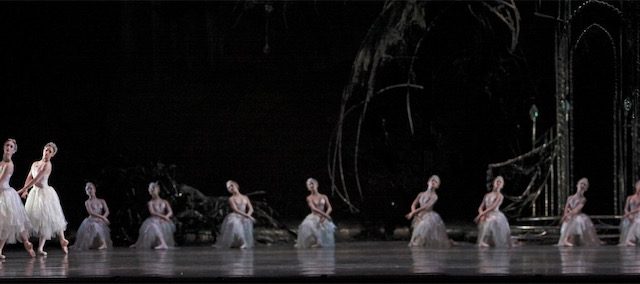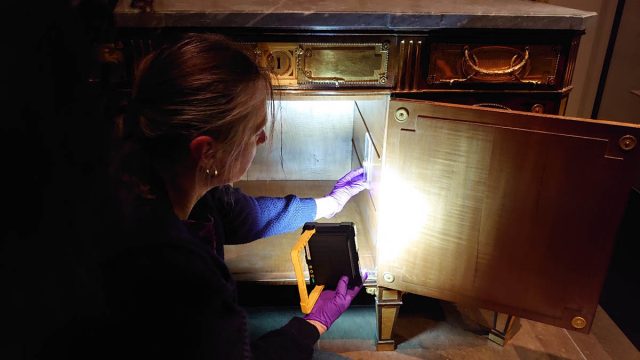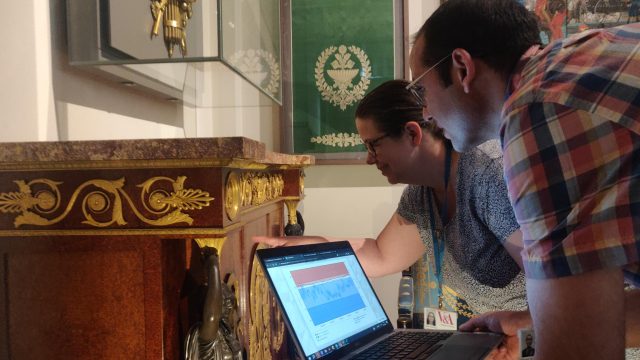On the sixth day of Christmas, my true love sent to me,
Six geese a-laying,
Five gold rings,
Four calling birds,
Three French hens,
Two turtle doves,
And a partridge in a pear tree.—“The Twelve Days of Christmas”
This blog’s going to focus on an object connected to the laying aspect of the gift given on the sixth day of Christmas in “The Twelve Days of Christmas,” but as a former avid collector of glass animals I can’t resist inserting an image of these lovely glass dress ornaments in the form of flying geese. They were made by Orplid glassworks around the middle of the twentieth century.
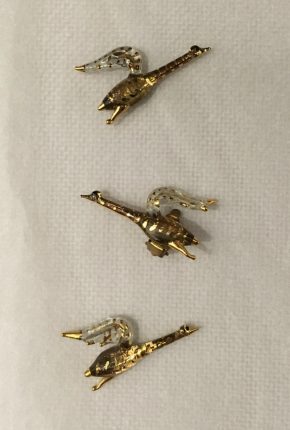
The eggs that birds lay, as well as birds themselves, have inspired many designers. Take, for example, the shoes with egg-like heels which Johnny Moke designed for Adeline André in 1986. Famously, Fabergé eggs—elaborate jewelled eggs mostly produced in the late nineteenth and early twentieth centuries under the direction of Russian jeweller Peter Carl Fabergé—were inspired by eggs, specifically decorated Easter eggs, probably both real and artificial. These jewelled eggs have themselves functioned as creative stimuli, for individuals including Judith Leiber, who was born in Hungary in 1921 and moved to the United States in the late 1940s. Leiber designed Fabergé egg style bags. One such bag, made in 1983, is owned by the V&A.
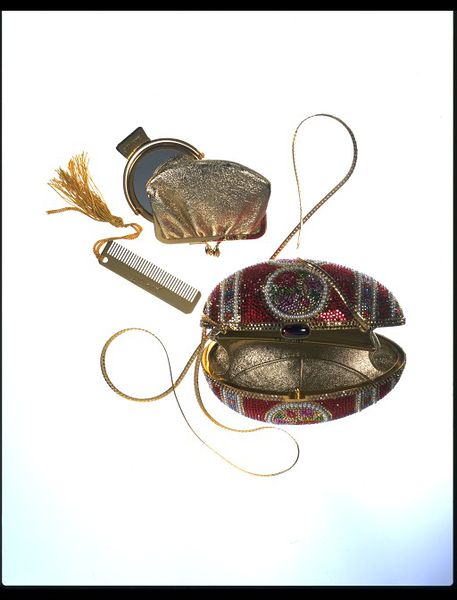
This bag and others like it have more in common with Fabergé eggs than shape and surface design. Both kinds of elaborate eggs, generally speaking, were designed for women— long associated, usually both admiringly and deprecatingly, with personal beauty and love of adornment, and with eggs, symbols of female fertility. Leiber’s bags were marketed as women’s accessories and the most famous Fabergé eggs are those which were made for Russian Tsars Alexander III and Nicholas II as Easter presents for their wives and mothers.
And both Fabergé eggs and Leiber’s egg-shaped bags simultaneously functioned as artistic creations and status symbols. These egg-inspired objects were intricately designed. The level of design, combined with the reputation of the designers and the techniques and often the materials used, have made these highly expensive items. The bag pictured above was jewelled by hand, although rhinestones were used instead of the more costly stones that they resemble: diamonds. Notably, Leiber’s encrusted eggs, more so than those they were modelled on, are functional as well as collectible.
Fabergé’s and Leiber’s eggs are also united by their connection to major conflicts; the Russian Revolution of 1917 essentially ended the creation of Fabergé eggs, and Leiber was caught up in the Holocaust of World War II before she founded her business in 1963. Unrest disrupted the production of Fabergé’s eggs and preceded Leiber’s encrusted egg-shaped bags. These are objects of relatively relaxed, affluent times, when designers had the freedom to create and customers the ability and willingness to buy luxury goods. Although interestingly during World War II Leiber designed intricate handbags in her mind in order to distract herself from the surrounding misery.
If you’re interested in making an appointment to view textiles and fashion objects at the Clothworkers’ Centre, please email clothworkers@vam.ac.uk.
This post was edited by the author on 21 December 2020 as part of work on sensitive terminology and topics.
